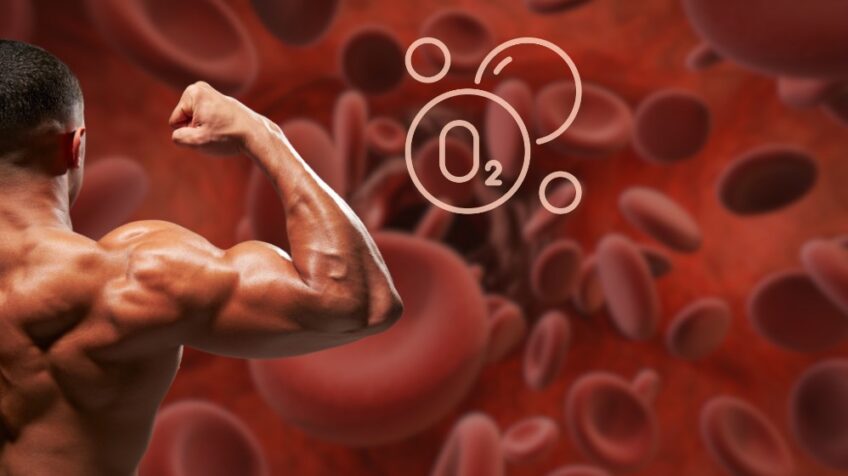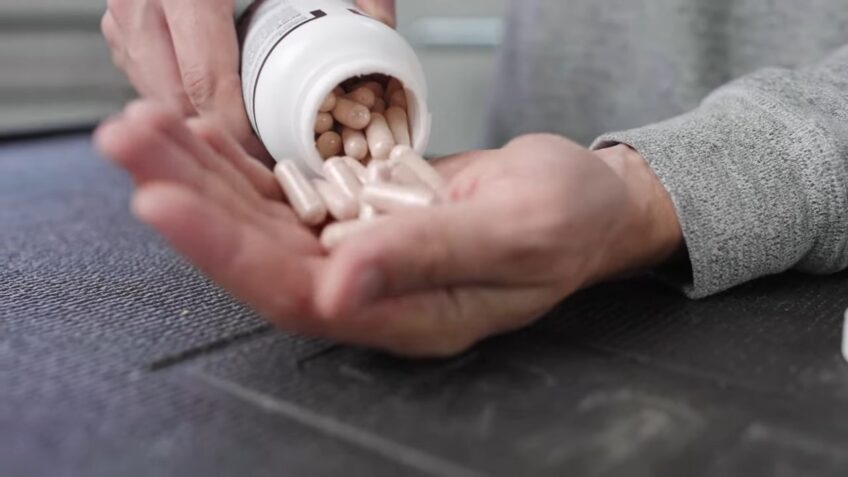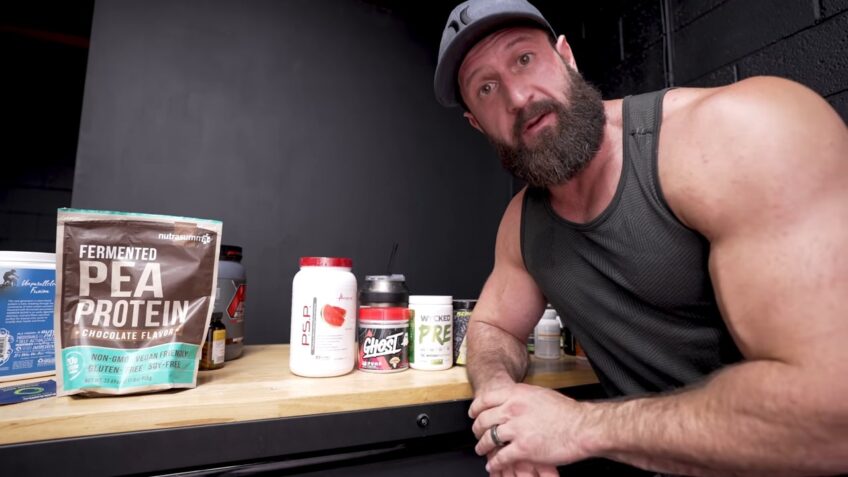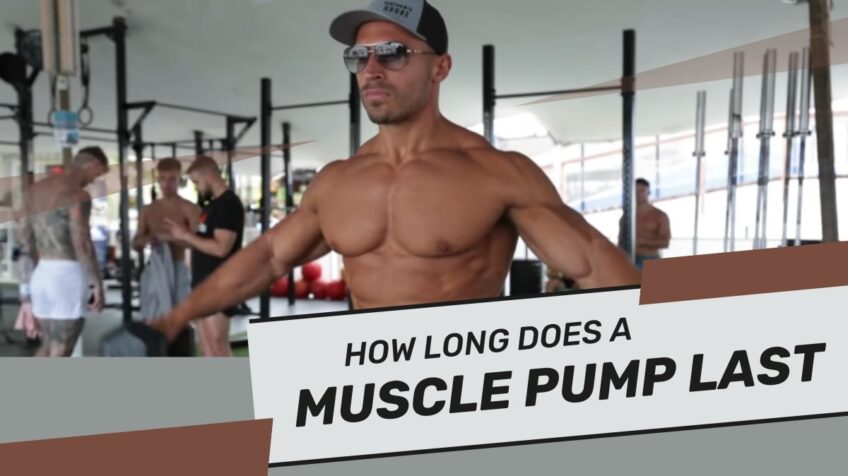Get the answers you need! This guide tells you how long a pump should last and what affects its lifespan. So, you’ll have the facts to pick the perfect pump for your house or biz. Reliability is key – know that you’ve got a pump that’ll last!
Definition
They are the temporary bulging of muscles after a workout. This is caused by extra blood flow and cell swelling, due to muscle contraction and burning carbs during exercise. The pump can last from a few minutes to a few hours. It all depends on the intensity and length of the exercise. Plus, other factors like warm temperatures can play a role.
Bodybuilders like it, as it makes muscles look more defined and gives a good feeling. But, it’s important to remember that this is only a short-term effect. To have long-term muscle growth, you need to train consistently and eat right.
Increase in blood flow and oxygen

Achieving it increases blood flow and oxygen to the muscles while exercising. This temporary feeling of tightness and fullness is often desired by bodybuilders.
The duration can differ. Factors include an individual’s fitness level, the intensity of the workout, and the type of exercise done. Eating carbs and doing high-repetition sets can help prolong it.
It can motivate people to stay on their fitness journey. However, it is important to remember that it is only temporary and does not guarantee muscle growth or strength gains.
Temporary nature
It happens when your muscles swell during a workout. You might feel like your muscles look more defined. But it’s just temporary, only lasting a few hours after the workout.
Carbs and exercise help to get the pump. So it’s a great motivator for bodybuilding and fitness.
Try it out: To get the most from the pump, do the following:
- Exercise
- Eat right
Get the results you want!
What triggers a muscle pump?
Fitness fanatics often ask this. To get the body they want, they need to know the secret of muscle pumping. Let’s look at the causes and how to get optimal results!
From our own experience, we can explore the triggers and how to use them better:
Cellular swelling and contraction
Cellular swelling and contraction is the key to muscle definition and the “pump”. When we exercise, our muscles contract. This increases blood flow. Fluid fills the muscle cells, causing swelling. This gives the look of a pumped-up muscle.
Carbohydrates are important for this process. They provide energy for muscle contraction and pump. Higher reps with lighter weights cause more cellular swelling than heavier weights with fewer reps. But remember, it is temporary. It lasts a few hours after a workout.
For a better pump:
- use higher reps
- use carbs in your pre-workout routine.
Blood flow and pressure
Maintaining blood flow and pressure is vital for health and muscle function. Knowing what triggers a pump and how long it lasts can help you reach your fitness goals.
Exercising boosts blood to your muscles. This creates a temporary size increase and definition, known as a pump. Doing high reps with moderately heavy weights can increase blood flow and prolong the pump.
A pump’s length depends on fitness level, hydration, and nutrition. It can last from a few minutes to several hours after exercise.
To have a successful pump, focus on exercises for your target muscle group. Increase reps over time. Stay hydrated and eat right to support muscle function and blood flow.
Importance of higher reps and shorter rest periods
Performing more reps and shorter rests during workouts can help create a muscle pump and make it last longer. This pump is caused by increased blood flow to the muscles, and it gives them a fuller, more vascular look.
Higher reps and shorter rests increase the intensity of your workout. This means more blood flow to the muscles and a bigger pump. It can also lead to muscle growth by causing metabolic stress.
If you want a longer-lasting and more intense muscle pump, try higher reps and shorter rest periods. Pro tip: Focus on your mind-muscle connection during high rep sets to really feel it and get the best pump.
A gym pump is not permanent
It is vital to understand this when making realistic fitness aims. To get a temporary swell in muscle size, one must have the correct exercise and nutrition plan. However, the effect will vanish soon after the workout. Don’t be disappointed if the pump goes away.
Concentrate on steady and sustainable progress toward your fitness targets.
Return to pre-workout size
Many people love the pump they get post-workout, where their muscles look bigger and more defined. But this pump isn’t permanent and will eventually fade. Knowing how long it will last is key for those trying to build muscle.
It varies in duration – it could be a few minutes to several hours. Enjoy the feeling, but don’t rely on it to track progress.
To get back to pre-workout size, rest is key. Take days off and don’t overwork any one muscle group. Plus, nourish your body with good food and plenty of sleep.
Factors affecting longevity
Achieving it can be influenced by several factors. These include intensity and duration of workout, diet, hydration levels, and the number of reps. More reps lead to increased blood flow in targeted muscles, creating a bigger pump that lasts longer. But, too many reps can cause fatigue and a shorter pump.
To maximize results, focus on finding the balance between intensity, duration, and reps.
The need for consistent workout program
Consistency is essential for lasting results from your fitness routine. A gym pump may give you a temporary boost in muscle size and definition, but it won’t last. You need a regular workout program.
Targeted exercises and proper repetitions can help maintain and improve muscle tone and fitness. Consistent exercise not only helps you reach goals, but also lowers injury risk and ups your health. Don’t just rely on a gym pump or quick gains. Make consistent exercise part of your lifestyle.
How to make a gym pump last longer
For longer-lasting pumps, we have some tips:
- Hydrate properly
- Add high-intensity intervals to your routine
- Learn how to make your gym pump last!
Drink a protein shake
A protein shake after a workout can help you keep it in your muscles for longer. Protein shakes are a great way to get your body the nutrients it needs to improve recovery and muscle growth. Select a protein powder that works with your dietary needs and fitness goals.
Options include whey, casein, and plant-based protein powders. Add exciting ingredients like fruit, nut butter, or greens to enhance flavor and nutrition. Have a protein shake after exercise for a more effective pump and better recovery.
Consume quality carbohydrates
Consume quality carbs for a healthy lifestyle and to keep your insulin pump running well. Quality carbs have low sugar, high fiber, and lots of nutrients. They give your body a steady stream of energy throughout the day.
Consume these carbs from whole grains, fruits, and veggies. This helps regulate your blood sugar and prevents spikes that can damage your pump.
Change the infusion set and cartridge every few days. Check your blood sugar often and follow your doctor’s advice for insulin dosing.
Increase repetitions
Up your pump and use repetitions! This can help extend its life. With more use, pumps may suffer wear and tear, which leads to breakdowns. But, with more reps, each use puts less strain on the pump, reducing the chance of failure.
Keep in mind to only do this for pumps made for continuous use. Plus, don’t forget to clean and lubricate regularly. If you hear strange noises or it’s not performing well, it could be time to get a new one.
Increase reps and take proper care of your pump – these steps will pay off in the long run.
Keep stress to a minimum
Stress is a part of life, but it affects your well-being, especially when it comes to your pump. To make sure your pump lasts as long as possible, keep stress low. Do this by:
- Scheduling maintenance appointments
- Buying quality parts
- Dealing with any issues quickly
Also, be sure it is used correctly, and not overworked. This will reduce stress and lengthen its lifespan. Taking steps to reduce stress on your pump saves money, and stops frequent repairs or replacements.
Give nitric oxide supplements a try

Nitric oxide supplements have been growing popular among athletes and fitness fanatics. They may improve endurance, boost the muscle pump, and improve performance when exercising. So, if you want to take your workout to the next level, give nitric oxide supplements a try.
Nitric oxide supplements work by increasing blood flow and widening the vessels. This helps oxygen and nutrients reach your muscles leading to increased muscle pump and endurance. But, the effects of these supplements may differ based on the person and the product used.
It’s essential to not use nitric oxide supplements as a substitute for a healthy diet and exercise. Moreover, overuse can cause adverse effects such as headaches and digestion problems.
Adopt blood flow restriction training
Adopt BFR to switch up your workout routine! BFR restricts blood flow to the muscles during exercise, leading to fatigue and growth. It works with weights and cardio. Benefits? More muscle, faster recovery, and less joint pain. Plus, you can get the same results with less weight – great for those with injuries or who don’t have access to lots of weights.
Maintain physical fitness and stay healthy
Being physically fit is necessary for good health. To do this, there are several actions to take. Regular exercise, balanced meals, and adequate sleep are just a few. Doing activities like jogging, yoga, or strength training can help improve heart health, build up muscles and bones, and reduce stress.
Remain consistent when it comes to physical fitness. Make a plan that fits your lifestyle and stick to it. Also, be aware of signs of exhaustion or injury to avoid any harm. A healthy way of living will extend the life of your body, and caring for it will increase your well-being.
Keep tension during the workout
Keep tension in your muscles. Do control, deliberate movements. Avoid cheating or swinging the weight. This focused contraction helps blood flow and can start muscle growth.
To keep it, avoid long rest periods between sets. Also, use supersets or drop sets. Prioritize consistent tension for better strength and muscle size.
Warm vs. Cold Temperature: Which Is Better To Prolong A Gym Pump?

Which is best for a longer gym pump? ‘Warm or cold Temperature?’ This section helps fitness fanatics get the most out of their workout. We’ll look at the pros and cons of using warm and cold. When you finish reading, you’ll know more about keeping your pump and how to get the most from your fitness routine.
Avoid cold temperatures
Temperature can affect its duration. Cold temps are bad; avoid them! When muscles are cold, blood flow decreases, and they won’t be as full. Wear warm clothing between sets to maintain the pump. But don’t overheat or you’ll get tired and dehydrated, reducing the pump’s duration.
Supplements can help too. Arginine helps dilate blood vessels, and creatine helps with water retention. Everyone’s body is different so experiment to find what works best.
Stay warm
Keep your muscles warm during your workout for better gains! When the muscles are warm, blood vessels widen, allowing more blood and nutrients to reach them. This enables cell repair and growth. On the other hand, cold environments can restrict blood vessels and block nutrient delivery.
Dress appropriately: wear moisture-wicking base layers, insulating mid-layers, and breathable outer layers. Start with dynamic stretching and low-intensity movements to warm up. Use a heating pad or hot water bottle on muscle groups before you start.
Importance of consistent workout and dedication
It’s important to be consistent with workouts and dedicated to reaching a good pump. This is a temporary increase in muscle size, right after a workout. A pump is great, but it won’t last. To maintain and improve muscle size and strength you must focus on progressive overload and stay consistent. Dedication to a fitness routine and a healthy lifestyle is necessary for long-term fitness goals. Without dedication, it’s easy to get discouraged and not reach a good pump or any other goal.
Try the tips for longer gym pump duration.
- Drop sets can help keep a pump going. This is when you do an exercise with a heavy weight until failure, then lower the weight and continue.
- Focus on the mind-muscle connection and contract the muscle during each rep.
- Supplements like citrulline malate & beetroot powder help increase blood flow and prolong the pump.
- Stay hydrated and avoid long rest periods.
FAQs

Can supplements help to prolong the muscle pump?
Certain supplements, such as nitric oxide boosters and arginine, can enhance blood flow to the muscles and potentially prolong it.
How often should you aim for a muscle pump during a workout?
There is no set frequency for achieving it during a workout, as it will vary depending on individual goals and preferences.
Is the muscle pump a reliable indicator of muscle growth?
While it can indicate temporary muscle growth, it is not necessarily a reliable indicator of long-term muscle growth.
How does the muscle pump affect recovery?
It can enhance recovery by increasing blood flow and promoting nutrient delivery to the muscles.
Can overtraining decrease the duration of the muscle pump?
Yes, overtraining can decrease its duration by hindering blood flow to the muscles.
How can you tell if you are achieving a muscle pump during a workout?
It is typically characterized by a temporary increase in muscle size and definition, as well as a feeling of tightness or fullness in the muscles.
Conclusion
In conclusion, the lifespan of a pump can vary greatly depending on the type of pump, how it is used and maintained, and various other factors. However, with proper care and maintenance, most pumps can last for several years.
It is important to regularly inspect and service your pump to ensure that it is functioning properly and to extend its lifespan as much as possible. Ultimately, if you have concerns about the longevity of your pump, it is always best to consult with a professional for guidance and recommendations.

